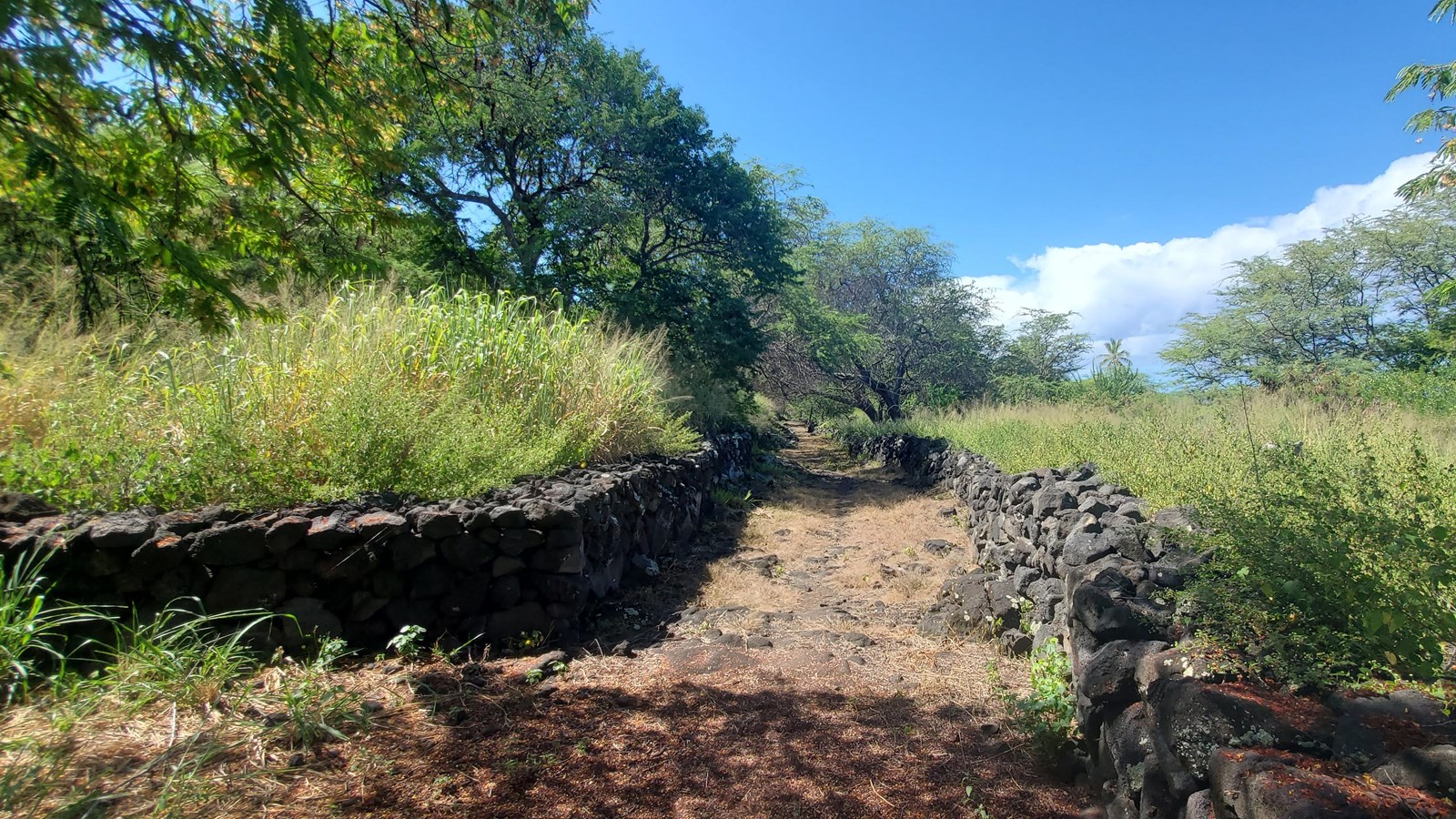Last updated: October 18, 2021
Place
O - Pā Hale

NPS
Historical/Interpretive Information/Exhibits
As you continue through the heart of Kiʻilae village, you will notice stone walls on either side. These walls enclosed house sites, or pā hale, and kept out animals such as pigs, cows, and goats that roamed the are Walls would rarely have gates and instead would have places built up to step over the wall into the house site. Later, stone walls were modified to accommodate ranching operations in the area.
Within the walls would be a house platform upon which a house would be built. In Kiʻilae village, the majority of the houses were the old-style thatched grass houses. However, the more “well-to-do” houses were constructed with modern lumber and had tin roofs, like the John Ahu house. Showing the transitional nature of these times, some houses met halfway with thatched walls and a tin roof. Houses typically were just one large room for the entire family.
One of the things that all of these house site had in common was the lack of a bathroom or even a pit outhouse. Bathing was done in the ocean and other activities were just done outside or in the tidal areas. The village also did not have electricity. In the evenings, light was provided by kerosene lanterns or kukui nut lights in which sundried kukui nuts were strung onto coconut midribs and lit. According to residents, one string of kukui nuts would last half the night.
In the “yard” of the pā hale, families would grow any useful or decorative plant that could survive in the dry coastal environment, but most of the food was grown in the kula gardens upslope. “Yards” would also have a designated area for garbage, sometimes walled off from the rest of the area.
How are these traditional pā hale different or similar to the home you live in today?
